I am having difficulty understanding the lock behaviour difference in the following examples, which cause me to have to resolve a deadlock.
I use (updlock,holdlock) for the common scenario of "select first, update/delete later". It might be relevant that in this specific case what is going to happen "later" is delete.
First, let me set up a case where everything works fine. As a "control panel query", let's create a very simple table, add some rows, and also prepare a lock selection query based on ashman786's post:
/*
create table color(id int primary key,descr nvarchar(50))
truncate table color
insert color(id,descr) values (0,'red'),(1,'green'),(2,'blue')
select * from color
*/
SELECT L.request_session_id AS SPID,
O.Name AS LockedObjectName,
L.resource_type+isnull(': '+L.resource_description,'') AS LockedResource,
L.request_mode AS LockType
FROM sys.dm_tran_locks L
JOIN sys.partitions P ON P.hobt_id = L.resource_associated_entity_id
JOIN sys.objects O ON O.object_id = P.object_id
JOIN sys.dm_exec_sessions ES ON ES.session_id = L.request_session_id
JOIN sys.dm_tran_session_transactions TST ON ES.session_id = TST.session_id
JOIN sys.dm_tran_active_transactions AT ON TST.transaction_id = AT.transaction_id
JOIN sys.dm_exec_connections CN ON CN.session_id = ES.session_id
CROSS APPLY sys.dm_exec_sql_text(CN.most_recent_sql_handle) AS ST
WHERE resource_database_id = db_id()
ORDER BY L.request_session_id
For test 1, copy-paste each the following in a new session, each modifies one pk value:
select @@SPID, @@trancount
--52 is my spid
begin tran
select * from color with (updlock,holdlock) where id=1
delete color where id=1
commit
rollback
select @@SPID, @@trancount
--56 is my spid
begin tran
select * from color with (updlock,holdlock) where id=2
delete color where id=2
commit
rollback
Running the first line shows the SPID, which we conveniently write down in the following line.
If we create & insert the color table, then run the begin tran and select on both tabs, then the lock query shows:
+------+------------------+---------------------+----------+
| SPID | LockedObjectName | LockedResource | LockType |
+------+------------------+---------------------+----------+
| 52 | color | PAGE: 1:704 | IU |
| 52 | color | KEY: (8194443284a0) | U |
| 56 | color | PAGE: 1:704 | IU |
| 56 | color | KEY: (61a06abd401c) | U |
+------+------------------+---------------------+----------+
Seems fine. Now run the deletes on both sides without committing, and we get a similar result:
+------+------------------+---------------------+----------+
| SPID | LockedObjectName | LockedResource | LockType |
+------+------------------+---------------------+----------+
| 52 | color | PAGE: 1:704 | IX |
| 52 | color | KEY: (8194443284a0) | X |
| 56 | color | PAGE: 1:704 | IX |
| 56 | color | KEY: (61a06abd401c) | X |
+------+------------------+---------------------+----------+
Following this, committing works. A dataflow variation of one session doing both select and delete also works fine.
For test 2, instead of using the pk value as literal, we will use a temp table:
select @@SPID, @@trancount
--60 is my spid
begin tran
drop table if exists #t
select * into #t from color with (updlock,holdlock) where id=1
delete color where id in (select id from #t)
commit
select @@SPID, @@trancount
-- 54 is my spid
begin tran
drop table if exists #t
select * into #t from color with (updlock,holdlock) where id=2
delete color where id in (select id from #t)
commit
Running begin tran and select into on both sessions results in exactly the same lock results as before: 2xU Key locks, 2xIU Page locks. However, as soon as one of the delete statements is run (@60), the picture changes:
+------+------------------+---------------------+----------+
| SPID | LockedObjectName | LockedResource | LockType |
+------+------------------+---------------------+----------+
| 54 | color | PAGE: 1:704 | IU |
| 54 | color | KEY: (61a06abd401c) | U |
| 60 | color | PAGE: 1:704 | IX |
| 60 | color | KEY: (8194443284a0) | X |
| 60 | color | KEY: (61a06abd401c) | U |
+------+------------------+---------------------+----------+
Changing its own U/IU to X/IX is exactly what happened previously, but this time, 60 has also a U lock on the other session's key! Of course, when the delete of the other session happens, a deadlock is formed for this reason. This seems to happen regardless of holdlock by the way.
So...why this difference? Will I have to make do without the temp table in order to avoid deadlocks, or is there some workaround?


